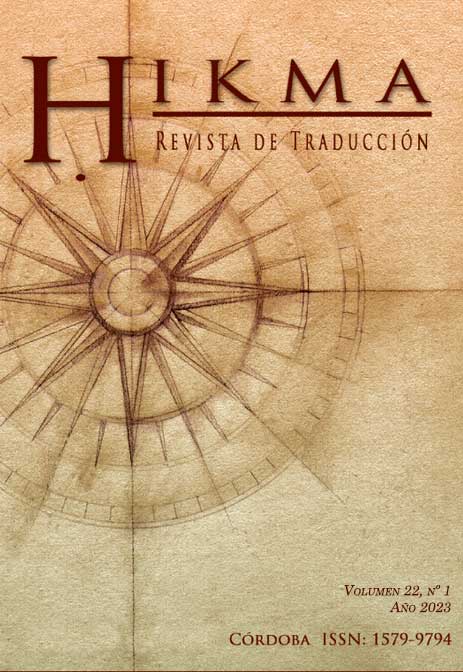A Tool Designed to Streamline the Search for Scholarly Literature Addressing Online Translation and Interpreting Pedagogy
Main Article Content
Abstract
Translator and interpreter educators seeking new pedagogical ideas and working in the face-to-face, blended, online, and remote modalities would benefit from reviewing the pedagogies proposed during more than two decades of research into translator and interpreter training and education in virtual environments. This paper contains a description of the methods employed to review scholarly publications addressing online and blended translator and interpreter training and education (1997-2022). The results are used to create an evolving public linear bibliography of scholarly literature named «Online Translator and Interpreter Education». The paper begins with a description of the need for a specialized bibliography, a justification for hosting the bibliography in timeline software, and a discussion of the terms used in the bibliography name. Following this, the means of locating literature on the topic of online and blended translator and interpreter education are detailed. Finally, the literature is categorized and arranged in the timeline in ways useful to individuals consulting it. The article concludes with a demonstration of how the resource can be queried for information on developments in online translator and interpreter education over time. The first portion of the demonstration considers the needs of interpreter educators seeking to incorporate curated online practice materials into their coursework. The second illustrates how the need for robust online translation coursework is being addressed within the context of two ongoing initiatives.
Downloads
Article Details

This work is licensed under a Creative Commons Attribution-NonCommercial-ShareAlike 4.0 International License.
Authors who publish with this journal agree to the following terms:
1. Authors retain copyright and grant the journal right of first publication with the work simultaneously licensed under a Creative Commons Attribution License that allows others to share the work with an acknowledgement of the work's authorship and initial publication in this journal.
2. Authors are able to enter into separate, additional contractual arrangements for the non-exclusive distribution of the journal's published version of the work (e.g., post it to an institutional repository or publish it in a book), with an acknowledgement of its initial publication in this journal.
3. Authors are permitted and encouraged to post their work online (e.g., in institutional repositories or on their website) prior to and during the submission process, as it can lead to productive exchanges, as well as earlier and greater citation of published work (See The Effect of Open Access).

